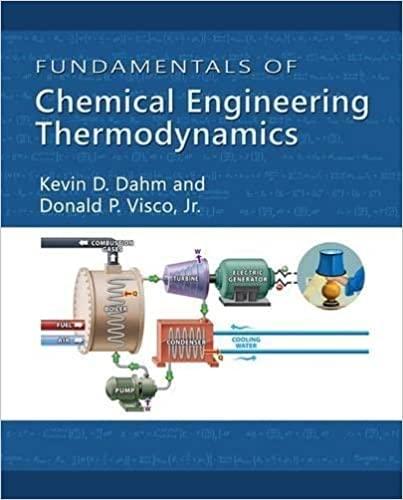A steady-state Rankine cycle currently in service operates as follows: Steam leaves the boiler at P
Question:
A steady-state Rankine cycle currently in service operates as follows:
∎ Steam leaves the boiler at P = 8 bar and T = 250°C.
∎ Steam leaves the turbine as saturated vapor at P = 0.3 bar.
∎ Water leaves the condenser as saturated liquid at P = 0.3 bar.
∎ Water leaving the condenser is pumped up to 8 bar and returned to the boiler.
∎ The power output FROM THE TURBINE is 1 MW. Your company has the opportunity to upgrade the turbine to one that is 85% efficient, at a cost of $1.2 million. This includes all costs associated with the replacement—the new equipment, installation, instru-mentation, etc. If the upgrade is done it will work this way:
∎ The flow rate, temperature, and pressure of the steam entering the turbine will all be unchanged, but the turbine is expected to produce more work.
∎ The pressure leaving the turbine will still be P = 0.3 bar, but won’t necessarily be saturated vapor, since the turbine is now removing more energy as work.
∎ The QC in the condenser will be adjusted such that the water leaving the turbine is saturated liquid, allowing the pump and boiler to operate EXACTLY the same in the upgraded cycle as they do in the current cycle.
∎ The current turbine produces 1 MW of power, 24 hours a day, for 350 days per year. The company values any “extra” work produced beyond this at $20/GJ.
A. Determine the flow rate at which water/steam circulates through the process.
B. Determine the efficiency of the turbine in the CURRENT cycle.
C. Determine the overall efficiency of the CURRENT cycle.
D. Determine the power produced by the turbine in the UPGRADED cycle
E. Determine the overall efficiency of the UPGRADED cycle.
F. How long will the new turbine have to operate in order to pay for the $1.2 million cost of the upgrade?
Step by Step Answer:

Fundamentals Of Chemical Engineering Thermodynamics
ISBN: 9781111580704
1st Edition
Authors: Kevin D. Dahm, Donald P. Visco





